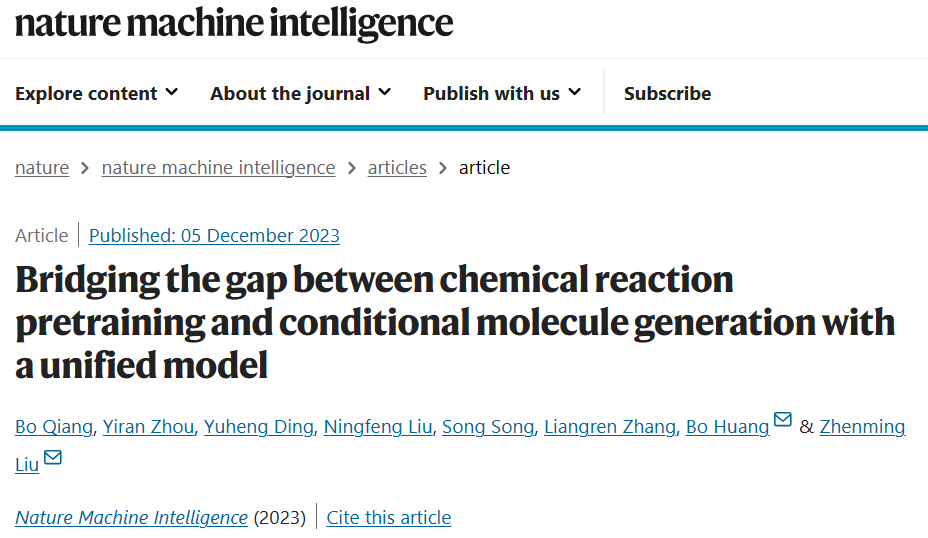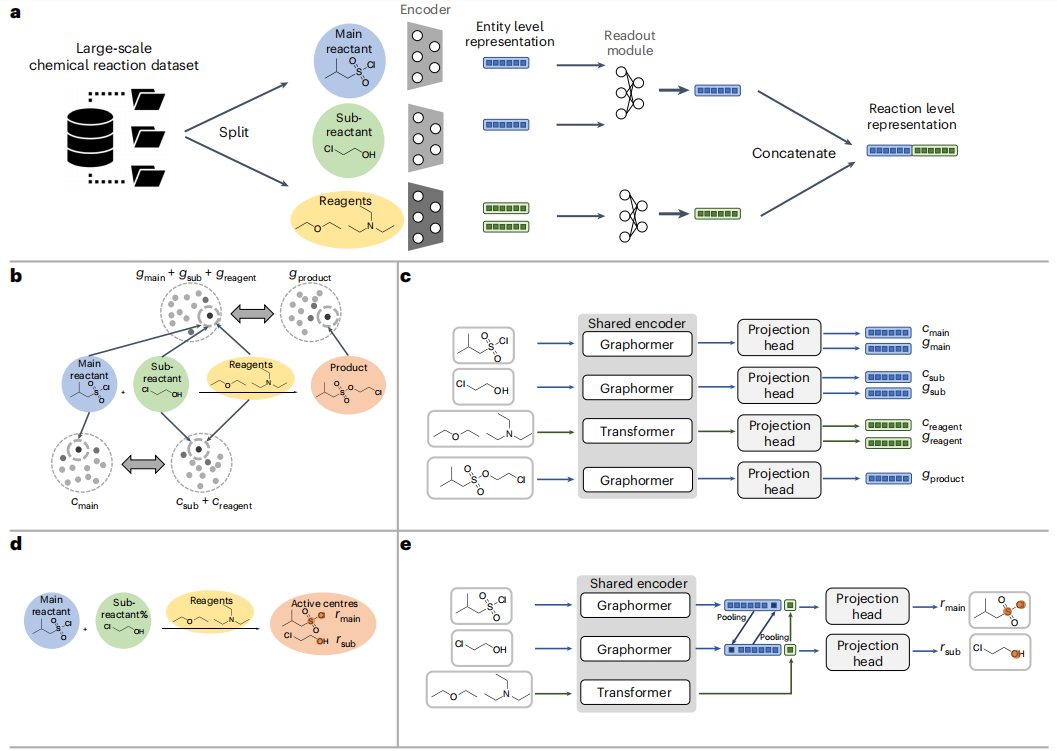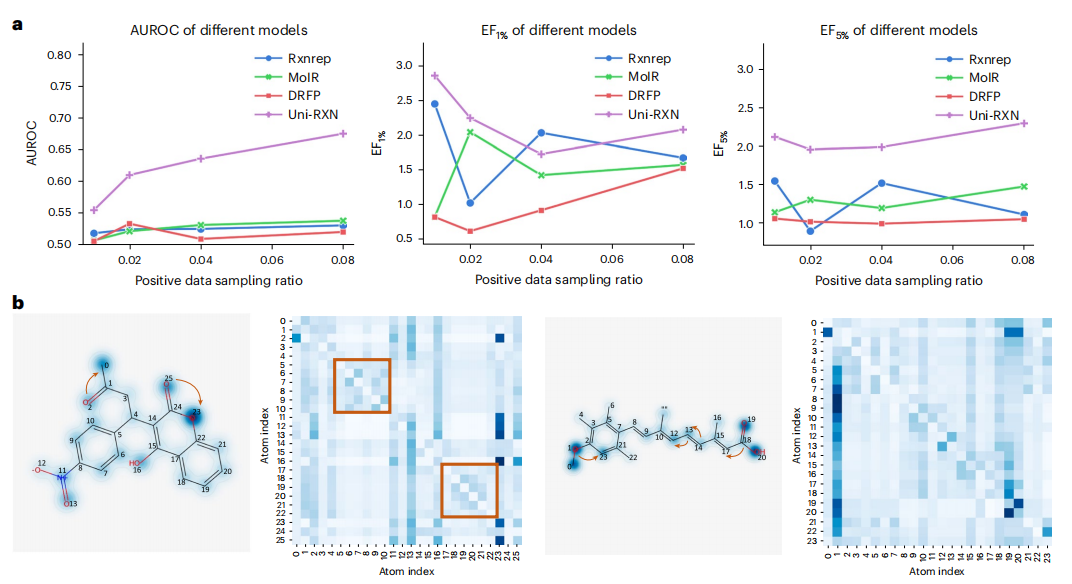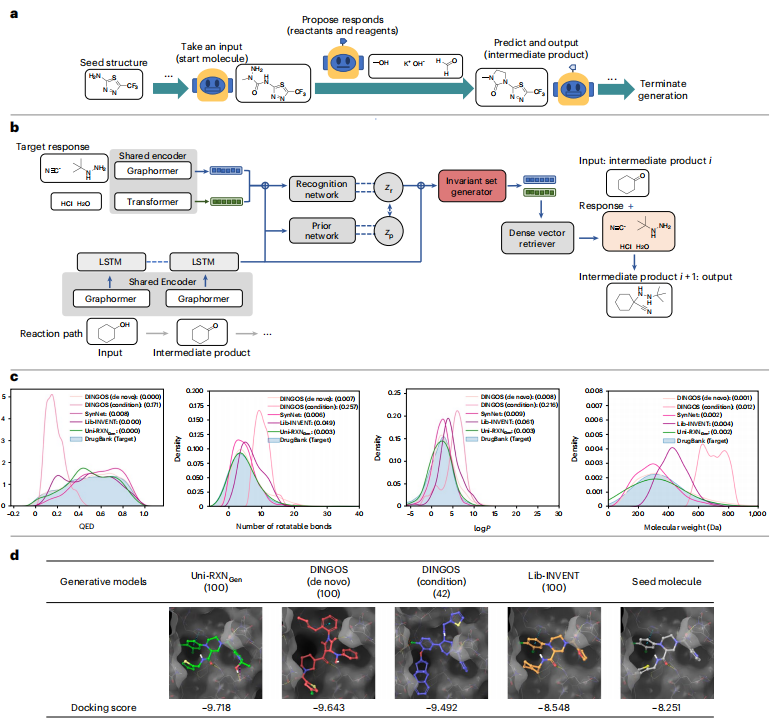
Chemical reactions are the basis of drug design and organic chemistry research. There is a growing need among the research community for a large-scale deep learning framework that can effectively capture the fundamental rules of chemical reactions.
Recently, a research team from Peking University and Wangshi Intelligence proposed a new method to bridge the gap between reaction-based molecular pre-training and generation tasks.
Inspired by the mechanisms of organic chemistry, researchers have developed a new pre-training framework that enables it to incorporate inductive bias into models. This proposed framework achieves state-of-the-art results when performing challenging downstream tasks. By leveraging knowledge of chemistry, the framework overcomes the limitations of current molecular generation models that rely on a small number of reaction templates. Across extensive experiments, the model generated high-quality, synthesizable drug-like structures
Overall, this research leads to large-scale deep learning for a variety of reaction-based applications The framework has taken an important step forward.
The research was titled "Bridging the gap between chemical reaction pretraining and conditional molecule generation with a unified model" and was published in "Nature Machine Intelligence" on December 5, 2023 .

Paper link: https://www.nature.com/articles/s42256-023-00764-9
Deep learning models have been widely used in many scientific research fields. The pre-training framework plays a positive role in the seamless integration of new tasks and can speed up the modeling process, especially when labeled data is limited
The basis of drug design and organic chemistry research It's a chemical reaction. Currently, the research and application of data mining have enabled deep learning models to be used in chemical reactions. Based on these data, there have been many data-driven studies that delve into representation learning of chemical reactions
Representation learning refers to automatically learning useful features from data and then using them for various Downstream tasks. Existing methods ignore basic theories of organic chemistry, limiting their performance.
In addition to the reaction classification task, molecule generation based on chemical reactions is also an important application. In earlier studies, template-based stepwise molecule generation strategies were often employed
These template-based methods relied heavily on predefined building blocks and reactions, which narrowed the Accessible chemical space. A similar trend is found in the field of reaction product prediction, where template-based methods cannot be extrapolated to complex reactions; this problem can be solved by using template-free methods.
In reaction-based molecule generation tasks, template-free methods also show generalization advantages over template-based methods. However, existing template-free molecule generation methods can only generate molecules based on predefined reactant libraries. In addition to this, for the lead compound or lead optimization stage in drug design, it is more advantageous to utilize chemical reactions as editing tools to modify a given structure. The resulting chemical library will focus on a subset of chemical space that can be synthesized with fewer reaction steps.
Here, researchers propose a new, comprehensive deep learning framework for chemical reactions called Uni -RXN. It aims to solve two basic tasks: self-supervised representation learning and conditional generative modeling.

Show: Uni-RXN composition and method. (Quote from: paper)
Different from existing methods, the researchers proposed a set of self-supervised tasks specifically designed for chemical reactions. These tasks include reaction center prediction, primary reactant and subreactant pairing, and reactant-product pairing. In an extensive evaluation on challenging reaction tasks, the Uni-RXN method surpasses the state-of-the-art, demonstrating its ability to effectively capture domain knowledge of chemical reactions. The promising results obtained pave the way for widespread downstream applications
By effectively capturing chemical rules, Uni-RXN is well suited for generation tasks. Unlike traditional methods that rely on selecting fragments from a library of predefined reactants, Uni-RXN takes molecular structures as input conditions and generates representations of the corresponding reactants while maintaining permutation invariance within the reaction. Leveraging the power of the dense vector similarity search package, Uni-RXN enables efficient retrieval of reactants from large reactant and reagent libraries. Subsequently, a reaction prediction model is employed to generate product outputs.
Compared to template-based methods that explore only a limited subset of chemical space, Uni-RXN exhibits superior performance in generating a wider range of synthesizable drug-like structures. This feature makes it particularly suitable for virtual library enumeration, and is supported by comprehensive statistical analysis and case studies.
The Uni-RXN approach has many advantages and can generate rich representations for the challenging chemical reaction classification task. Compared with other baseline models, Uni-RXN achieves an accuracy of 58.7% with only 4 data points per category
Rewritten content: Chemical reaction classification See Table 1 for accuracy. (Source: Paper)

Transformer models can be used to differentiate between optimized and unoptimized chemical reaction data. In addition, the encoder can also be easily applied to the generation of structural conditions

The content that needs to be rewritten is: The chart shows the retrieval performance of Uni-RXN and attention weight. (Source: Paper)
The results highlight the favorable properties of molecules generated by the proposed model, which make them well suited for drug discovery tasks. The model can generate more molecules with drug-like properties and synthesizability

Illustration: Uni-RXNGen process and performance. (Source: paper)
Combined with virtual screening methods such as molecular docking, this generated model can achieve efficient structure-activity relationship research. The huge synthetic drug-like chemical space generated by this model can improve the true positive rate of drug repurposing or hit molecule searches.
The above is the detailed content of Peking University & Wangshi Intelligence proposes a new model: bridging the gap between chemical reaction pre-training and conditional molecule generation!. For more information, please follow other related articles on the PHP Chinese website!




